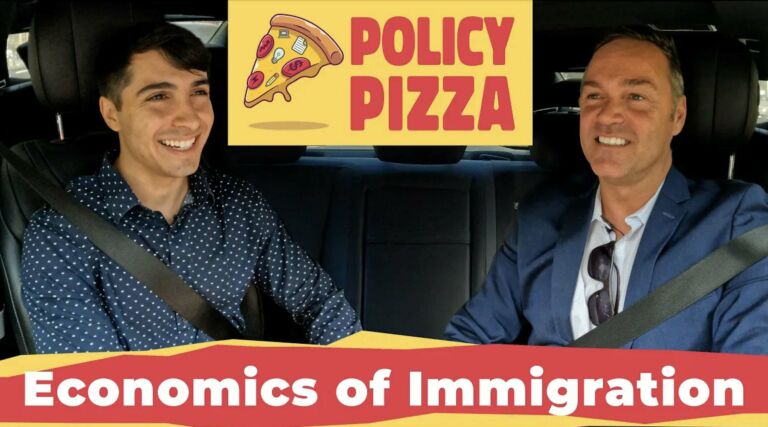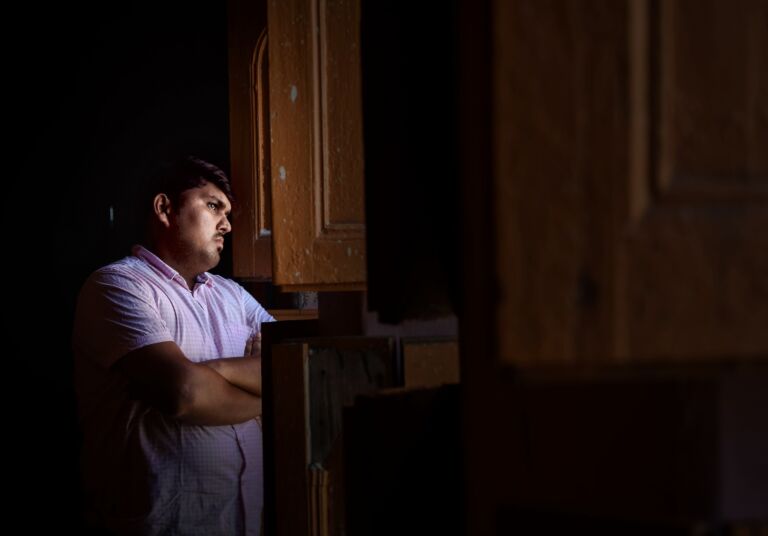This is an excerpt from two different sections of North Carolina’s Price Control Laws: Harming Those They are Meant to Help, a monograph that I wrote for the Locke Foundation over a decade ago. It’s relevance to the current moment should be obvious.
North Carolina’s Price Gouging Law—Prices Too High
North Carolina’s current law against what the legislation refers to as “extreme pricing practices” during “states of disaster, states of emergency, or abnormal market disruptions” was passed by the General Assembly in July of 2006. This version of the law was enacted in the wake of Hurricane Katrina to expand on the state’s original price gouging law, which was enacted in 2003. The 2003 law only applied to the specific geographical area that the state government had officially declared to be in a state of disaster. Because of this, complaints of gasoline price gouging in the aftermath of Hurricane Katrina could not be investigated because there was no state of disaster declared in North Carolina. The new law extends to “abnormal market disruptions” which would presumably apply to situations like the Hurricane Katrina disaster. One of the definitions of an “abnormal market disruption” is that it is accompanied by a declared state of disaster or emergency made by the President of the United States, “whether or not the declaration…applies to North Carolina.” As defined in the legislation, the products and services that come under this law are quite vague and open ended. They include “any merchandise or services which are consumed or used as a direct result of an emergency or which are consumed or used to preserve, protect, or sustain life, health, safety, or comfort of persons or their property.”
What actually constitutes “an extreme pricing practice,” called “price gouging” in the 2003 law, is only slightly better defined, although, as will be discussed below, the definition has nothing to do with sound economic theory and shows no consideration of what constitutes efficient price formation or the role of prices in an economy. Under the statute a person is guilty of price gouging if, with “knowledge and intent,” a price is charged that is “unreasonably excessive under the circumstances.” The statute goes on to state that determination will be based on two criteria, which presumably would help a court determine what is and isn’t “unreasonable.” The price increase would not be considered “unreasonable” or “extreme” if it could be “attributable to higher costs imposed by the seller’s supplier or other costs of providing the good or service during the state of disaster.” The second criteria looks at whether the prices a seller is charging may have been exceptionally low in the 60 days previous to the disaster declaration. If it was, then a significant price increase during the disaster also may not be considered “extreme.’
The statute though is still quite vague. For example, it does not specify how much of a price increase can be justified on the basis of an increase in costs. Also in the second criteria, the law only states that an average of prices for the previous 60 days will be examined, with no indication of how that average would be calculated. But while the laws vagueness makes it difficult for businesses to comply with, from an economics perspective that is not the real problem. As will be discussed below, these kinds of laws actually harm consumers. During times of disaster, when markets need to adjust as quickly as possible to changed conditions of supply and demand price gouging laws slow the process of recovery and prolong the agony…
Price Gouging Laws: Making Natural Disasters Worse
The Special Role of Price Increases During Emergencies and Natural Disasters
In terms of public welfare and social order it is particularly important to allow the price system to work freely during times of natural disasters and emergencies such as hurricanes or severe weather. During these times upward pressure is put on prices from both the supply and the demand side of the market. Prices should be allowed to rise as quickly as possible to reflect these market conditions.
Consider the case of gasoline before and after a hurricane. What is typical in such conditions is that consumers, in anticipation of the hurricane, tend to hoard gasoline by purchasing much more than they will need for any reasonable length of time following the hurricane. If a family owns three cars they may run out and fill all three tanks in addition to possibly filling extra containers in anticipation of shortages in the hurricane’s aftermath. If prices are allowed to rise as the demand increases, this “hoarding” behavior will become increasingly more expensive and therefore discouraged. In other words, the higher price encourages conservation right at the time when it is most needed. This will leave more gasoline in the tanks at the gas stations where it is available for those who really need it both before the hurricane and during it’s immediate aftermath, instead of in the tanks of cars that are sitting in people’s garages or driveways.
Ultimately these higher prices are what prevent shortages and closed gas stations. The higher prices brought about in times of emergency are not about the exploitational greed of businesses but rather about protecting consumers from the hoarding behavior of their fellow citizens. Also, the higher prices help to ration what could turn out to be reduced supplies over time. For example, if gas station tanks cannot be restocked in the immediate aftermath of the storm, possibly because of flooding or road damage, the gas that is conserved, not horded, prior to the storm, will be available during this period. And assuming that prices continue to be allowed to efficiently reflect the conditions of supply and demand, shortages will not develop.
This points to one of the ways that price control laws during time of disaster make the disaster worse. People hoard goods—gas, ice, bread, milk, etc.—in anticipation of shortages in the aftermath of the hurricane. The price control laws, by keeping prices artificially low in the face of increased demand and reduced supplies, guarantee that these shortages actually occur by encouraging the wasteful and ultimately harmful behavior that a free market would discourage.
A free price system would also encourage the appropriate behavior on the supply side. While higher prices discourage hoarding on the part of consumers by increasing profits, they encourage the generation of more supply by producers and sellers. Economist James Doti tells of one incident from his time as a graduate student at the University of Chicago in the 1950s that highlights this supply side response. He tells of a particularly bad snow storm in the city where everyone flocked to neighborhood grocery stores for the usual supplies of milk, bread, batteries, etc. Most of the stores did not raise their prices and soon ran out of supplies. There was one store though that was well stocked and was able to stay open through the entire storm. This store chose to double all of its prices. Instead of hording supplies shoppers purchased only what they absolutely needed to get them through the storm. But beyond this, with the higher profits that the owner earned he was able to hire neighborhood kids to make trips with sleds to a warehouse where they picked up the supplies needed to keep the store open.
Whether or not the law or some politician wants to call this price gouging behavior is irrelevant. The fact is that by choosing to double his prices this grocery store owner made life during this particular storm in this particular Chicago neighborhood better, not worse. While his competitors did not raise their prices and had to shut their doors to customers in need, the store that doubled its prices continued to serve the community through the entire ordeal. It should also be noted that if all of the area stores raised their prices, available supplies would have been greater and the general price increase would have been less. In other words, overall prices would not have to have been doubled in order to clear the market. The reality is that higher prices and the increased profits that they bring about create an incentive for people both from inside and outside the effected area to try and find ways to fill the supply gaps and to do it as soon as possible while the crisis and the temporary profit opportunity exists.
Price gouging laws like the one implemented in North Carolina, short circuit the market process and its beneficial effects. First, by keeping prices lower than their market clearing levels they encourage over-buying by consumers. This occurs at a time when conservation is needed the most. By encouraging over buying they induce shortages of critical items, such as ice, gasoline, batteries, and basic food supplies.
It should also be noted that price-gouging laws do not help low-income families. Instead they benefit those people who can get to the stores or gas stations first, i.e., before the shortages occur. This, in fact, is not likely to be lower income working class families where both husband and wife have to be working. Instead, it is more likely to be those people who can either afford to take time off from work or have one spouse at home who is able to take the time and get to the store.
It is worth noting that during the gasoline shortfalls brought about by Hurricane Katrina the latest amendments to North Carolina’s law had not yet been passed. As noted, until July 2006, when these changes were put in place, the state’s price gouging law only applied to areas where a state of emergency or disaster was declared. This means that prices in North Carolina were allowed to freely adjust to the dramatic reductions in gasoline supplies. Because gasoline venders, both at the wholesale and retail levels, were not fearful of raising prices to levels that they thought appropriate, gasoline customers made it through the crisis able to purchase the gasoline they needed, all-be-it at higher prices. In other words, there were no long gasoline lines and there was no rationing. In Georgia, on the other hand, where the Governor, using emergency powers, invoked anti-price gouging laws, long gasoline lines were common.
In addition to encouraging wastefulness on the part of the consumer and causing shortages, price-gouging laws also prolong the hardship suffered by the population during the aftermath of a disaster. They do this by reducing the rewards, i.e. the profits, for increasing supplies. If for example a convenience store is forced to use the average price that it sold the ice for during the 60 days previous to the emergency as a reference point, what incentive is there to, like the grocery store owner during the snow storm in Chicago, find innovative ways to restock its supplies. The fact is that the price during any previous time period is irrelevant to the appropriate price during and after the storm. In order for prices to do their job in a market they must be able to adjust to reflect the supply and demand conditions of the moment. The price of the product in the past is irrelevant and is completely arbitrary as a benchmark for public policy.


